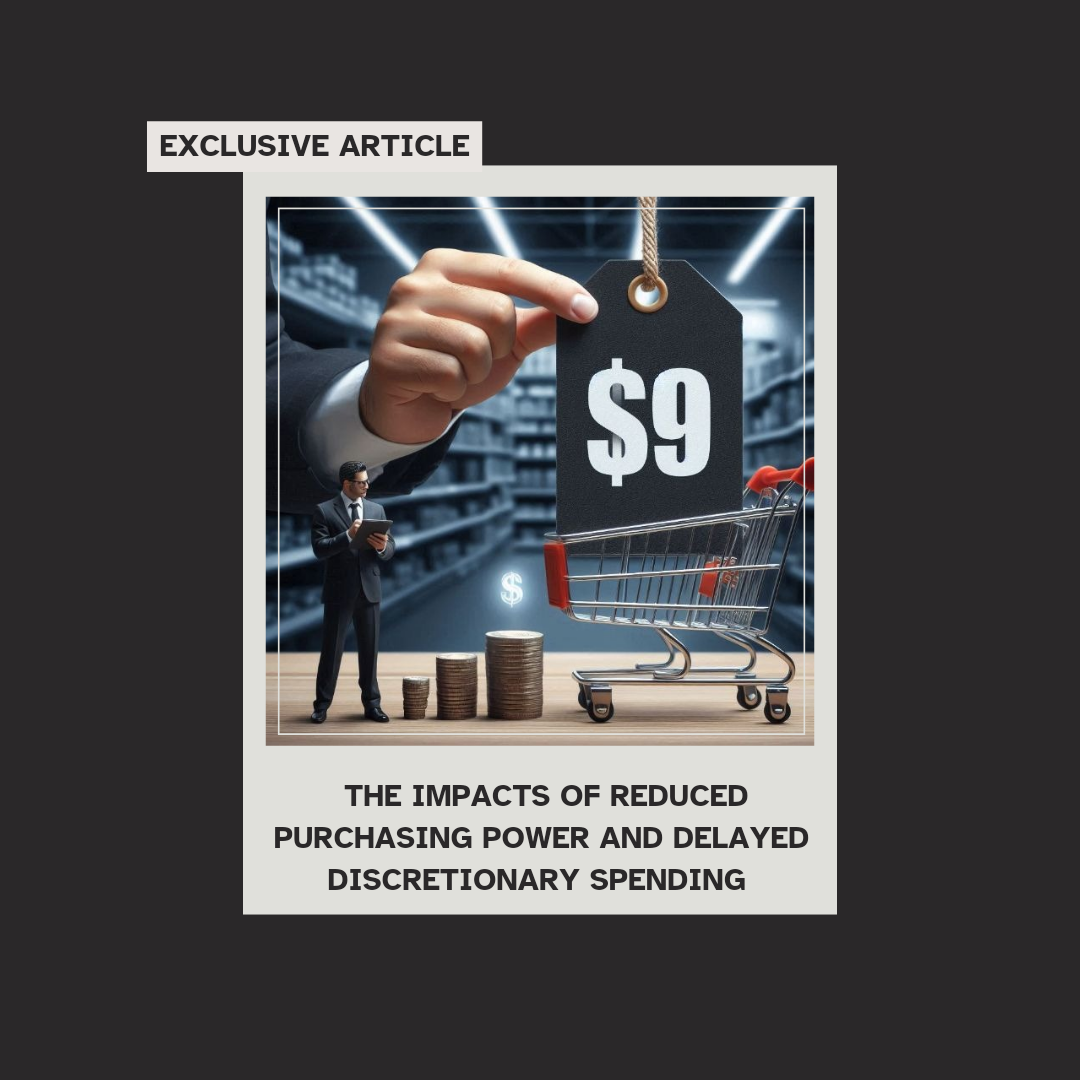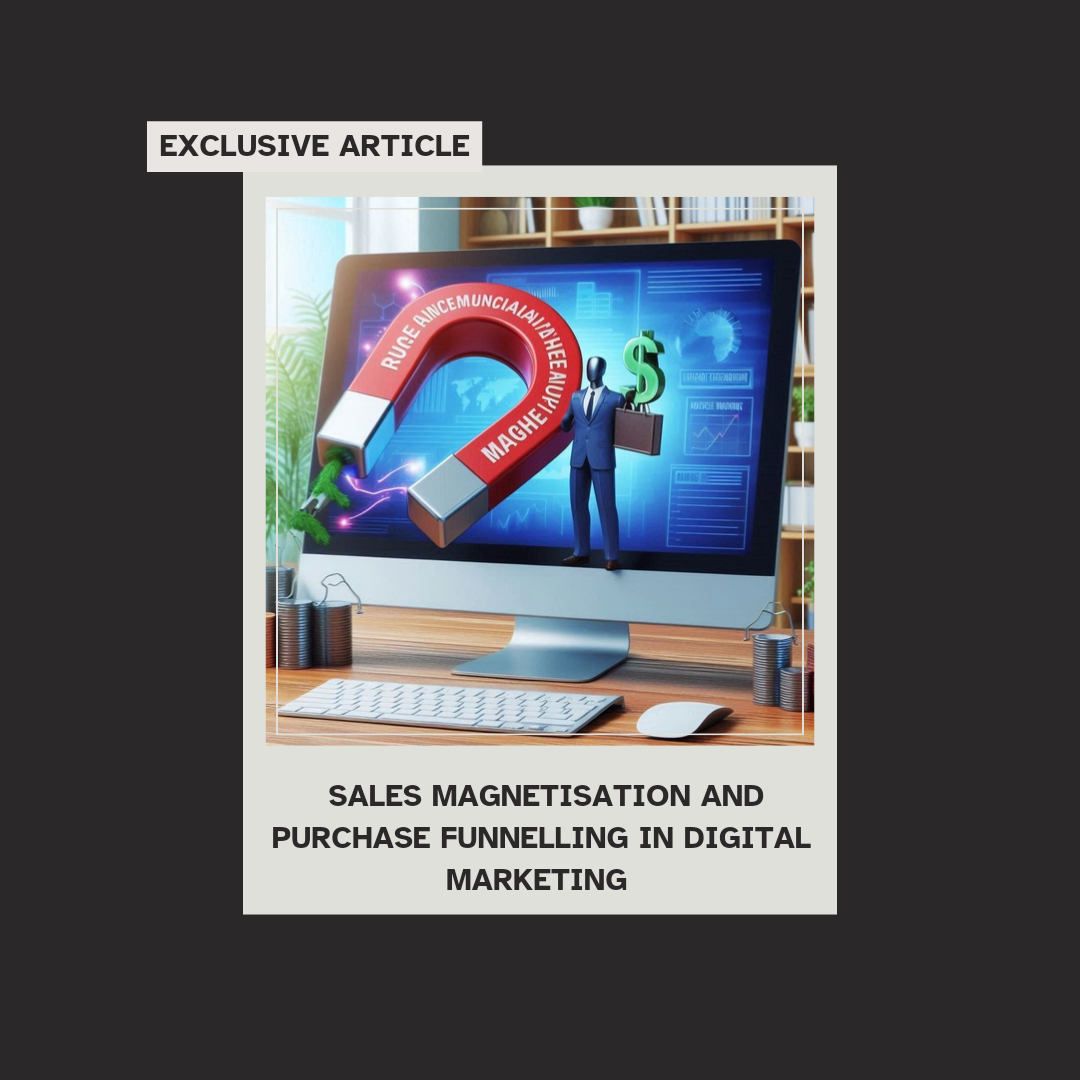Articles
Business and the Economy
EXCLUSIVE
ARTICLES
Make an impact today
Support my free content by contributing a donation.

Intricacies of Product Demand and Services in an Online Business
In the realm of online business, understanding the intricacies of product demand and service offerings is essential for driving growth and sustaining competitive advantage. At the core, product demand is influenced by a multitude of factors including market trends, consumer behaviour, and seasonal fluctuations. An online retailer must engage in continuous market research to discern these patterns, allowing them to tailor offerings in response to shifting demands.
One of the significant complexities is the interaction between product visibility and consumer awareness. In digital marketplaces, products compete for attention against a backdrop of numerous alternatives. This necessitates an effective online marketing strategy that not only highlights the unique selling propositions of a product but also establishes a brand’s credibility. Leveraging search engine optimisation (SEO) and social media marketing can drive traffic and enhance visibility, ultimately translating to higher demand.
Moreover, the provision of services alongside product offerings can significantly augment consumer satisfaction and loyalty. Online businesses that excel in customer service, such as prompt responses to inquiries or streamlined return processes, can elevate the overall shopping experience. Services like personalised recommendations and responsive customer support not only fulfil immediate consumer needs but also foster long-term relationships, paving the way for repeat business.
Additionally, it is imperative for online businesses to adapt their inventory and service strategies in alignment with data analytics insights. By scrutinising purchasing trends and customer feedback, businesses can refine their inventory management practices, ensuring that they not only meet current demand but also anticipate future needs. This agility in operations is a critical component in a fast-paced digital environment, where consumer preferences can shift rapidly.
In conclusion, navigating the intricacies of product demand and services in an online business framework requires a strategic approach that combines market intelligence, strong marketing techniques, and exemplary service delivery. By doing so, businesses can position themselves favourably within the marketplace, enhancing both demand for their products and the overall customer experience.

Income Elasticity of Demand During Economic Upturn Online
Income elasticity of demand (IED) is a crucial concept in economic analysis, particularly during periods of economic upturn. It measures the responsiveness of the quantity demanded of a good or service to a change in consumer income. When the economy is thriving, consumer incomes generally increase, impacting demand patterns across various sectors.
In an economic upturn, we can expect an increase in the demand for luxury goods and services, which often have a high positive income elasticity. As consumers feel more financially secure, they are more likely to purchase non-essential items, leading to a surge in demand for products such as high-end electronics, designer fashion, and premium dining experiences. Conversely, demand for inferior goods, which exhibit negative income elasticity, tends to decline as consumers shift their spending towards higher-quality alternatives, favouring brands that offer perceived value and prestige.
Understanding income elasticity during these times helps businesses strategise effectively. Companies can analyse their product offerings, adjust marketing strategies, and refine pricing models to better align with shifting consumer behaviours. For instance, a business observing an increase in income elastic products may consider expanding its luxury range or enhancing customer engagement through targeted promotional campaigns.
In summary, income elasticity of demand plays a significant role during economic upturns, guiding businesses in their decision-making processes and enabling them to harness growth opportunities in a fluctuating market. By closely monitoring changes in consumer income and the corresponding demand patterns, businesses can position themselves for sustained success in a thriving economy.

Optimizing Landing Pages and Funneling Traffic
Optimising landing pages and effectively funnelling traffic are critical components of any successful digital marketing strategy. A well-designed landing page serves as a dedicated space where visitors can be transformed into leads or customers, making its optimisation essential for enhancing conversion rates.
Elements of an Effective Landing Page:
Clear Value Proposition: The first thing a visitor should notice is a concise and compelling value proposition. This statement should clearly articulate what makes your offering unique and why visitors should care.
Focused Call-to-Action (CTA): Every landing page should have a clear, actionable CTA. Whether it’s signing up for a newsletter, downloading a resource, or making a purchase, the CTA should stand out visually and be aligned with the overall goal of the page.
User-Centric Design: A clean, user-friendly design improves the likelihood of conversion. Ensure that the layout is intuitive, the information hierarchy is logical, and the visuals support the textual content. Mobile responsiveness is also crucial, as a significant portion of traffic comes from mobile devices.
Relevance to Traffic Source: Ensure that the content of your landing page matches the expectations set by the ads or links that drive traffic to it. This continuity not only boosts engagement but also lowers bounce rates.
Funnelling Traffic Effectively:
To maximise the potential of your landing pages, it's important to funnel traffic in a strategic manner. This involves using various channels such as social media, email marketing, search engine optimisation (SEO), and pay-per-click (PPC) advertising. Each source should be tailored to target specific audience segments, allowing for personalised messaging and improved relevance, which in turn enhances the likelihood of conversion.
Tracking the performance of these channels is vital. Utilise analytics tools to understand which traffic sources yield the highest conversion rates and adapt your strategy accordingly. A/B testing can provide insights into what variations of your landing page perform better, helping refine your approach over time.
By systematically optimising your landing pages and carefully directing traffic, you will establish a strong foundation for driving conversions while nurturing leads through their customer journey.

Impact of Digital Marketing and Strategic Marketing during Economic Decline
In an era marked by economic uncertainty, the impact of digital marketing and strategic marketing becomes increasingly pivotal for businesses striving to maintain relevance and profitability. During downturns, consumer behaviours shift dramatically, compelling organisations to adapt their marketing strategies to effectively engage their target audiences.
Digital marketing offers unparalleled flexibility and reach, allowing businesses to connect with consumers in real-time across diverse platforms. Social media, email marketing, and targeted online advertising enable brands to maintain communication with their customers, offering essential information, updates, and promotions that resonate with current needs. For instance, during economic decline, consumers may prioritise value and utility over luxury, prompting brands to recalibrate their messaging to highlight affordability and quality.
Strategic marketing, on the other hand, facilitates a comprehensive approach to understanding market dynamics and consumer sentiment, ensuring that organisations make informed decisions in their marketing efforts. By leveraging data analytics and market research, businesses can identify emerging trends, assess competitive landscapes, and tailor their offerings to address the evolving demands of consumers.
Moreover, the integration of both digital and strategic marketing allows for a more agile response to economic challenges. Brands that implement a cohesive strategy that combines traditional principles with modern digital tactics are better positioned to navigate the complexities of a declining economy. This adaptability not only helps preserve customer loyalty but can also uncover new market opportunities, positioning firms for recovery when the economic tide turns.
As businesses face the realities of an economic downturn, embracing the full potential of digital and strategic marketing becomes not just a necessity but a vital catalyst for survival and growth.

Impacts of Reduced Purchasing Power and Delayed Discretionary Spending
Reduced purchasing power and delayed discretionary spending have profound implications for both consumers and businesses alike. When individuals experience a decline in their real income—due to rising costs of living, inflation, or economic uncertainty—they are often forced to prioritise essential purchases over non-essential items. This shift leads to a contraction in overall consumer spending, which is a critical driver of economic growth.
For businesses, the consequences of this behaviour can be significant. Retailers may see a drop in sales of luxury and discretionary products as consumers tighten their belts, opting instead for lower-priced alternatives or delaying purchases altogether. This not only affects revenue but also impacts inventory management, marketing strategies, and overall brand positioning. Companies may need to adapt their offerings, focusing on value-driven promotions or essential goods to maintain market share during tougher economic times.
In addition, delayed discretionary spending can create a ripple effect across various sectors. Service industries, particularly hospitality and entertainment, may face heightened challenges as consumers resist spending on experiences that they perceive as non-essential. As foot traffic declines, businesses may need to rethink their operational models, potentially leading to cost-cutting measures, workforce reductions, or even closures.
Moreover, the psychological aspect of reduced purchasing power cannot be overlooked. Consumer confidence tends to wane in times of economic strain, driving a more cautious approach to spending. This fear-based behaviour further exacerbates the challenge by creating a cycle of reduced demand that can hinder recovery efforts.
Overall, the interplay between reduced purchasing power and delayed discretionary spending highlights the critical need for businesses to remain agile and responsive to shifting consumer behaviours. In an environment marked by uncertainty, understanding these dynamics becomes essential for sustainable growth and long-term success.

Effectively Conducting A/B and B/A Website Analysis for Product Evaluation
In the fast-paced digital landscape, harnessing data to drive product decisions is imperative for businesses seeking a competitive edge. A/B and B/A analyses are two essential methods for evaluating the efficacy of website features and overall user experience when launching new products or iterating on existing ones.
A/B Testing involves comparing two distinct versions of a webpage or feature to determine which performs better in terms of user engagement, conversion rates, or other key performance indicators (KPIs). In this approach, a random segment of users is exposed to version A of the webpage, while another segment interacts with version B. By carefully measuring metrics such as click-through rates, purchase behaviour, or the time spent on a page, businesses can ascertain which iteration is more effective in achieving their goals.
On the other hand, B/A Testing flips this process by initially rolling out the new version (B) to a select user group while maintaining the original (A) for a broader audience. After collecting data from the initial rollout, the insights gained can be used to optimise the B version before a complete migration takes place. This method allows for a more iterative approach, enabling teams to make data-informed changes based on early feedback.
Key Elements to Consider:
Clear Objectives: Define what success looks like for each test. Whether it’s increasing sign-ups or improving retention, clarity in objectives will guide the testing process and analysis.
User Segmentation: Ensure that participants in both versions reflect a cross-section of your target audience. This segmentation helps ensure that results are representative and actionable.
Statistical Significance: Determine the sample size needed to achieve reliable results. Avoid drawing conclusions from insufficient data which could lead to misinformed decisions.
Iterative Improvements: Once the preferred version has been established through A/B or B/A testing, use the feedback to make enhancements. Continuous testing and iteration should be part of the overall product development strategy.
Integration with Analytics: Leverage tools and platforms that track user behaviour and interaction to gather insights more effectively. Integrating website analytics with A/B testing frameworks can provide a comprehensive view of user engagement.
By strategically conducting A/B and B/A website analyses, businesses can elevate their product evaluation processes, ensuring that modifications are not only intuitive but also driven by robust data. This approach fosters a culture of continuous improvement, ultimately leading to a more compelling user experience and increased customer satisfaction.

Price Elasticity and Marginal Utility of an Online Downloadable Product
When assessing the market dynamics of online downloadable products, understanding price elasticity and marginal utility becomes essential for strategic decision-making. Price elasticity measures how sensitive the quantity demanded of a product is to a change in its price. In the realm of digital goods, this sensitivity can vary significantly based on various factors such as the product type, target demographic, and market competition.
For instance, consider an online course that teaches advanced software skills. If the price of this course is increased by 10%, and the demand decreases by 15%, the price elasticity of demand can be calculated at -1.5, indicating that the course is elastic. This suggests that consumers exhibit a high sensitivity to price changes, potentially due to the presence of alternative educational resources that provide similar value. Conversely, if the product is a unique e-book with a niche audience, a similar price increase may result in only a 5% decrease in demand, reflecting inelastic behaviour with a price elasticity of -0.5.
Marginal utility, on the other hand, refers to the additional satisfaction or value derived from consuming one more unit of a product. In the context of downloadable products, the marginal utility can be influenced by factors like the perceived value of content, exclusivity, and the user's previous experiences. For instance, as a consumer downloads additional courses or e-books, their marginal utility may diminish if they feel they are receiving less novel information or if the content fails to meet their evolving needs.
Pricing strategy must therefore take into account both the price elasticity and perceived marginal utility. A product priced beyond the optimal threshold may not only decrease demand but also reduce the overall consumer satisfaction derived from additional units. Consequently, businesses must carefully analyse customer behaviour and feedback to determine the best pricing strategy that maximises revenue while maintaining a high level of consumer utility.
In conclusion, by thoroughly understanding the interplay between price elasticity and marginal utility, businesses can better navigate the competitive landscape of online downloadable products, allowing them to set prices that not only attract customers but also optimise profitability.

Understanding Target Markets and Demographics
Understanding target markets and demographics is crucial for effective business strategy and communication. A target market refers to a specific group of consumers that a business aims to reach with its products or services. These consumers share similar characteristics and needs, allowing businesses to tailor their marketing efforts for maximum impact.
Demographics provide vital data on these groups and include factors such as age, gender, income level, education, and geographic location. By analysing these characteristics, businesses can gain insights into consumer behaviour and preferences. For example, a luxury brand may identify its target market as affluent individuals aged 30-50, while a budget-conscious product may focus on younger adults or families with lower income.
Understanding these parameters enables businesses to develop precise marketing messages and select appropriate channels for communication. For instance, social media platforms might be more effective for reaching younger demographics, while email marketing might resonate better with older consumers. Additionally, effective segmentation of the market allows for personalized marketing strategies, leading to improved engagement and customer loyalty.
Overall, grasping the intricacies of target markets and demographics does not only enhance marketing efficacy but also supports product development, pricing strategies, and customer relationship management, ultimately driving business growth.

Impact of Inflation and Business Cycles on Digital Marketing
Inflation and business cycles significantly influence digital marketing strategies, requiring businesses to adapt their approaches to align with changing economic conditions. As inflation rises, the cost of goods and services increases, which can compel consumers to tighten their budgets. This shift often leads to altered spending habits, where prioritising essential goods over discretionary items becomes the norm. Digital marketers must carefully analyse consumer behaviour during these periods to adjust their messaging and offers, ensuring they remain relevant and appealing to the target audience.
Moreover, during inflationary periods, businesses may experience tightened profit margins. This scenario necessitates a reassessment of marketing expenditures, often pushing companies to pivot towards more cost-effective digital marketing channels. For instance, businesses might increase their reliance on social media marketing, content marketing, and email campaigns, which typically yield higher returns on investment compared to traditional marketing methods. By harnessing data analytics, marketers can identify which strategies resonate most with consumers, allowing for more refined targeting and personalised messaging.
Conversely, during economic downturns associated with business cycles, consumer confidence generally decreases. This can lead to a decline in overall spending, with consumers becoming more discerning about their purchases. Digital marketing strategies must reflect this reality by focusing on building trust and long-term customer relationships rather than merely pushing promotions. Emphasising value propositions, highlighting customer testimonials, and implementing loyalty programmes can help mitigate the impact of reduced spending.
In summary, the intersection of inflation and business cycles necessitates a dynamic and flexible digital marketing strategy. By continually monitoring economic indicators and consumer behaviours, businesses can adapt their digital marketing efforts to navigate these challenges effectively and maintain relevance in a fluctuating market.

Unleashing the Potential of Content Marketing and Branded Content
Content marketing and branded content are pivotal strategies for businesses aiming to engage consumers in today's digital landscape. By focusing on storytelling, these methods not only enhance brand visibility but also foster deeper connections with audiences. Unleashing the potential of content marketing requires a strategic approach that prioritises high-quality, relevant content tailored to the target demographic.
At its core, content marketing is about creating valuable resources that inform, entertain, or solve problems for potential customers. This could range from insightful blog posts and engaging videos to interactive infographics and podcasts. The primary goal is to establish your brand as a trusted authority within your niche, thereby driving organic traffic and customer loyalty.
Branded content, on the other hand, integrates brand values and messaging directly into the storytelling process. This form of content is designed to resonate emotionally with audiences rather than overtly promote a product or service. When executed effectively, branded content can enhance brand perception and encourage consumer advocacy, leading to increased word-of-mouth and social sharing.
To fully realise the potential of these strategies, businesses must invest in understanding their audience's preferences and behaviours. Analytics tools can provide valuable insights into what type of content performs best, allowing brands to refine their approach continually. Additionally, collaboration with influencers and content creators can amplify reach and credibility, bringing fresh perspectives that align with audience expectations.
In conclusion, the power of content marketing and branded content lies in their ability to create meaningful interactions with consumers. By focusing on quality, relevance, and authenticity, businesses can unlock new opportunities for growth, engagement, and sustainable success in an ever-evolving marketplace.

Enhancing Brand Visibility and Conversions
Enhancing brand visibility and conversions is a multifaceted approach that requires strategic efforts across various channels. To start, businesses must establish a strong online presence, utilising social media platforms, search engine optimisation (SEO), and content marketing to reach their target audience effectively. A robust SEO strategy ensures that your brand appears in relevant search results, driving organic traffic to your website.
Engaging content that resonates with the target demographic is critical. This includes blogs, videos, and infographics that address customer pain points, showcase your brand’s value, and encourage interactions. By combining educational and promotional content, brands can nurture leads and build trust with potential customers.
Moreover, leveraging data analytics is essential in understanding consumer behaviour and preferences. By analysing this data, businesses can tailor their marketing campaigns to meet the specific needs of their audience, ultimately enhancing conversion rates. Implementing A/B testing for different marketing messages allows for the optimisation of campaigns, leading to improved performance.
Finally, fostering collaboration with influencers and industry partners can significantly boost visibility. Influencers bring their own audience and authenticity, helping to amplify brand reach and credibility. When chosen carefully, these partnerships can lead to higher conversion rates as they introduce your products or services to a wider, yet targeted, audience.
In summary, enhancing brand visibility requires a comprehensive approach that marries content creation, data-driven decisions, and strategic partnerships. This not only elevates brand awareness but also sets the stage for increased conversions, driving sustainable business growth.

Effectively Utilising Product Keyword Research
Effectively utilising product keyword research is essential for optimising your online presence and enhancing your marketing strategy. By identifying the specific terms and phrases that potential customers are using in search engines, businesses can align their content and product listings with consumer intent.
Start by employing tools such as Google Keyword Planner or SEMrush to uncover high-volume keywords relevant to your products. Look for long-tail keywords, which often indicate a more targeted audience and higher conversion rates. For example, instead of focusing solely on "shoes," a more effective approach might involve "men's running shoes for flat feet." This specificity not only directs the right traffic to your site but also facilitates a clearer understanding of customer needs.
Incorporate these keywords naturally into your product descriptions, blog posts, and metadata. Engaging content that answers common customer queries can also enhance your SEO efforts, making your website a valuable resource and establishing your brand as an authority in the industry.
Regularly revisiting your keyword strategy is equally important. The digital landscape is constantly evolving, and so are consumer trends. By keeping abreast of changes in keyword performance and traffic analytics, your business can adapt accordingly, improving both search engine rankings and user engagement. In summary, a robust approach to product keyword research enables businesses to connect effectively with their audience, driving conversions and fostering long-term growth.

